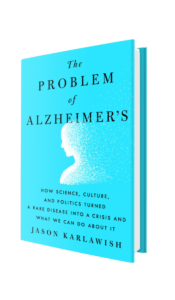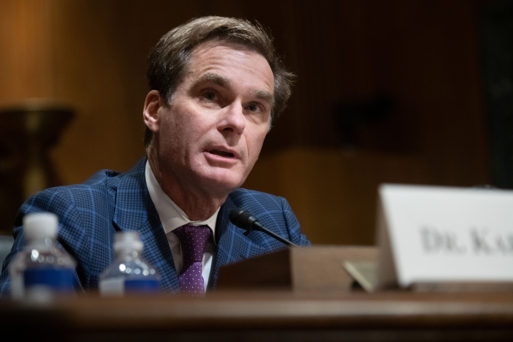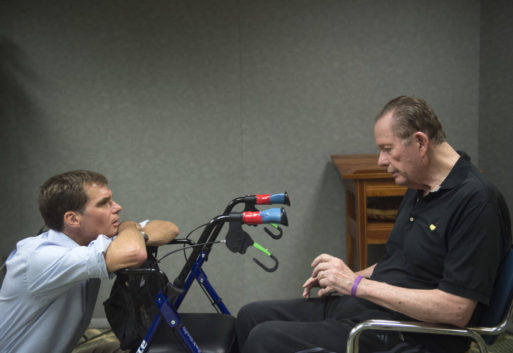
Physician and author, Dr. Karlawish, offers thought-provoking insight into what he calls the disease of the century in his new book, “The Problem with Alzheimer’s.”
Dr. Jason Karlawish researches and writes about issues at the intersections of bioethics, aging, and the neurosciences. He is a Professor of Medicine, Medical Ethics and Health Policy, and Neurology at the University of Pennsylvania and Co-Director of the Penn Memory Center, where he cares for many patients diagnosed with dementia.
 Karlawish chronicles the decades of struggles and realities for patients and families in his latest book, “The Problem of Alzheimer’s: How Science, Culture, and Politics Turned a Rare Disease Into a Crisis and What We Can Do About It.” Although many milestones in research, treatment, or care did not live up to their promise of relief for millions of Americans, Dr. Karlawish remains hopeful about the future.
Karlawish chronicles the decades of struggles and realities for patients and families in his latest book, “The Problem of Alzheimer’s: How Science, Culture, and Politics Turned a Rare Disease Into a Crisis and What We Can Do About It.” Although many milestones in research, treatment, or care did not live up to their promise of relief for millions of Americans, Dr. Karlawish remains hopeful about the future.
He offers some key insight and practical advice for those who may be caring for a loved one with cognitive impairments now, or in the future.
Editor’s note: This interview has been edited for length and clarity.
Why do you refer to Alzheimer’s disease as the disease of the century?
The size, scope and nature of the problem of Alzheimer’s disease certainly fit into the category of diseases that demands sustained attention; century’s worth of work, if you will. It is not the disease of the month or the week.
Even though this disease affects tens of millions of families, why does it still carry a stigma in society?
It is a stigma, we, in part, cultivate. We talk about how people with Alzheimer’s disease lose their minds. But in fact, they have damaged minds. They have not lost them. When you think about it, a human that is alive, but lost their mind, is in some sense a non-person. And once we arrive at that perception, we introduce all kinds of ghastly metaphors and desires to distance yourself from that person. So, a lot of it is in our language. I don’t think we should talk about people with Alzheimer’s disease in this way. We should talk about how we can help to repair their damaged minds.
I understand there is testing available to diagnose Alzheimer’s disease, but you mention in your book it is not often used to do so. Can you explain why?
Among some of the first unequivocal breakthroughs in our ability to measure Alzheimer’s disease is amyloid testing. This diagnostic test developed in 2012 transformed our ability to diagnose the disease. We can now measure tau protein in the brain, as well. And soon we may be able to measure other pathologies.
Neuropathologists look under a microscope for three things to make a diagnosis of Alzheimer’s disease: a lack of neurons where they should be, the presence of amyloid protein, and the presence of tau protein. In the past, we could only confirm this diagnosis after death from a brain autopsy. But now you can get an answer in life and have an explanation for your cognitive problems using scans to detect these pathologies. It is tremendous progress.
But these tests are not widely used in practice today. They are not considered valuable diagnostic tools due to a lack of clinicians who are skilled and talented in knowing how to use them wisely. As a nation, we have not created an adequate workforce for diagnosing Alzheimer’s disease. So, from a healthcare perspective, there is a lot of trepidation because these tests may be used indiscriminately.
Also, insurance companies wind up paying for these tests when they don’t provide much value. Most often, patients get tested so they can be prescribed treatments. You get a blood sample, send it to the lab, and it shows you have high cholesterol, so you are prescribed medication. But we don’t have those types of interventions for Alzheimer’s, so testing does not bring the same medical value in healthcare. For those reasons, these tests are not widely available because insurance companies don’t see them as a valuable tool in the care of a patient.

Dr. Karlawish testifies before a senate committee in 2019
Are we making any headway on this disease in healthcare on a national scale?
In 2011, President Obama signed the “National Alzheimer’s Project Act” into law, so America has a national plan. One of the goals of that plan is to improve access to care and improve the quality of care. There are initiatives at a federal level to train the workforce and provide families access to support and services they need.
One enduring problem that remains is progress on support for long-term services for families. Medicare statutes expressly prohibit paying for long-term care services. It is called “custodial care.” So American families must pay for services like day programs and figure it out on their own. That’s an area that needs progress. I have cautious optimism.
What strategies do you offer families, who are challenged with caring for a loved one with Alzheimer’s?
The theme of Alzheimer’s Disease and other neurodegenerative diseases is disabling cognitive impairments. That means that someone else must step in to address those disabilities. Here are a few suggestions for managing that:
1 . Think about putting together a day that is safe, social, and engaged. It is the pillar in solving day-to-day functional problems like preparing meals, paying bills, as well as enjoying time together. What would a day like that look like? You want to focus on all three things simultaneously so you can arrive at a balance.
2. Practice “loving deceptions” — an approach to addressing more vexing problems that patients and families face that arise from the fact that patients often have a perception of the world that vastly differs from that of others. For example, the patient may inquire about deceased relatives: “Where is my mom? I want my mom.” I think loving deceptions are a good strategy to address that because the truth can often hurt and be disruptive. Instead, a person might respond, “Mom will be home in an hour,” or something similar. It can feel deceptive, but for some patients, it may be a better strategy than truth.
3. Creative care strategies can also be helpful. For example, when the patient asks, “When is mom coming home?” and mom has been deceased for decades, you can answer with a beautiful question instead of responding, “She is dead,” or “She is coming home in an hour.” For example, you might ask a question about mom such as, “If mom were here, what would we do together?” or “What is it about mom that you are missing right now?” These questions make no reference to whether mom is alive or dead. And then, you can take the conversation from there.
You coin the term “homelooseness” in your book, referring to common arresting moments when those with dementia seem to shift from contented feelings of home to the unsettling feeling of homelessness in their minds. Can you tell me where the word is derived and more about what it means?
That is a term I adapted from literary critic, Michael Wood, who used it in a slightly different context when referring to his experience as an immigrant from the United Kingdom to America. He used the word “homelooseness” to express his feeling that he was neither home in America, nor home when he goes back to the United Kingdom. I thought it was a very appropriate concept, so I adapted it when thinking about the lives of people with advanced dementia who often find the home they are in is just not working. They appear to become unloosened, or disconnected from a home they may have lived in for years or decades, often crying out, “Whose house is this?” They are sort of asking for a new idea of home, where they might feel safe, social, and engaged. I like to think that the word homelooseness addresses the challenge when a patient repeats, “I want to go home,” while the activities at home don’t seem to help.
There is a role for long-term residential or institutional care. For some patients, that is what they may need. Although some of those institutions are run in a way that do not serve the goals of dignity and quality of life, it does not remove the fact that we may need those kinds of places at some point for our loved one. There is a movement to create spaces that conform to a person’s aesthetics versus an institutional setting. Some places embrace the taste or style that may be preferred by some patients like traditional versus contemporary decor. However, I don’t feel that alluding to a time past is necessarily beneficial because you are essentially creating another world for people, one that is not correct and present. This may be beneficial in some instances for some patients, but not for places.

Dr. Karlawish with Bill Lyon, a retired sports columnist who wrote about his experience living with Alzheimer’s disease.
It is very plain to see from the stories you share throughout the book that caregivers often struggle with their intimate role in caring for a person with dementia. What advice can you offer them to best navigate those demands?
A common theme among caregivers is the ambiguity or uncertainty about how much of their relative’s mind is still there and how to interact with that person. There are times they say to me, “She is still there, but I’m not sure she is there in the same way I knew her.” I think many of them struggle with that perception of their relative’s mind. They simply must arrive at a level of comfort in living in a contradiction. The person is both there, yet not entirely there. They need to achieve a sense of peace with that notion.
There is also a need for the caregiver to recognize they are now an extension of the cognition of the other person, or the mind of their loved one, and how that can be incredibly morally challenging at times. They must find a way to accept the reality that they cannot fully achieve everything they think their loved one needs and at the same time carry on their own life. Caregivers should accept that they need to arrive at an amicable reconciliation with this dilemma rather than pretend they can resolve it.
What kind of support is available for caregivers of those with Alzheimer’s or dementia?
The Alzheimer’s Association, founded in 1980, provides education and access to caregiver support and training. It is an integral part of the system of long-term care services and support.
Most certainly a call to their helpline can assist families in putting together a plan of care for their family: 800-272-3900

 Alzheimer’s Disease…The Disease of the Century!
Alzheimer’s Disease…The Disease of the Century!


 First the Wealth Gap, Now the U.S. Has a Growing Health Gap
First the Wealth Gap, Now the U.S. Has a Growing Health Gap

 Our Annual Seven Holiday Gifts for Someone Who Is Grieving, 2024 Edition
Our Annual Seven Holiday Gifts for Someone Who Is Grieving, 2024 Edition














